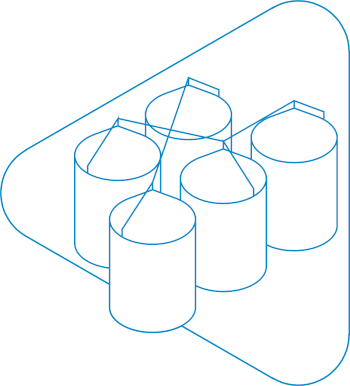Disinfection
Title:
Sodium hypochlorite-based disinfectant
Short description:
Technology for production of disinfectants based on sodium hypochlorite intended for use in hospital settings and clinical centers
Author:
SIGMA, Kula
Requested Budget:
500.000 USD
Time frame:
12 months

Problem: Besides the direct contact with respiratory droplets of an infected person, the coronavirus can also be transmitted through touching surfaces contaminated with the virus. In a hospital setting where the possibility of catching the virus from a contaminated surface is higher, cleaning and disinfecting regularly is an important precaution to lower the risk of infection. The rapid spread of the coronavirus Covid-19 pandemic has put disinfectants in extraordinarily high demand, price escalation and slowing down or even breaking the supply chains. Some countries have even imposed bans on the export of disinfectants, making the local self-sustainable production an important asset in resilience to Covid-19 and other similar health hazards.
Solution: To produce technological equipment for making disinfectant solution based on sodium hypochlorite (biocide agent) in 5 different concentrations, at the place of consumption, for the needs of disinfection of space, surfaces and hands. According to WHO recommendations, as well as those of the European Centre for Disease Prevention and Control, disinfectants based on biocide sodium hypochlorite are impactful in preventing the spread of the coronavirus. The sodium hypochlorite is made by electrolysis of an aqueous solution of common salt, which is a completely ecologically sustainable and safe process, without negative effects on the environment or people. The resulting disinfectant has a maximum concentration of 1% of the active ingredient* which is in line with the Classification and Labelling Directive of the EU. The equipment can be adapted to produce different active ingredient concentrations according to user needs. At a concentration of 1% each device produces minimum of 2,400 litres of disinfectant daily. By diluting to concentrations of 0.02% to 0.5%, the minimum daily quantity of disinfectant solution raises to 4,800 litres. Suggested concentrations of the active ingredient in hospital settings are 0.5% for disinfecting spaces, surfaces and hands. By applying this technology health care facilities would be able to produce their own disinfectant in the required quantity and concentration, thus become independent from the procurement of disinfectants and achieve financial savings.
Additional info: This is an innovative solution for disinfection in hospital settings. While the technology is not new, it has up to now been used in waterworks and its innovative application in the field of health could have a significant impact. The proposed solution is mobile and multi-functional, which makes it an ideal long-term solution for rural or temporary health facilities. In addition to the production of disinfectant, this equipment can be used to monitor the phytosanitary correctness of water and disinfect water in the hospital water supply system. For these purposes, the equipment has been used in the Clinical Center of Vojvodina since 2010. The biocide product sodium hypochlorite in all mentioned concentrations is registered with the Ministry of Environmental Protection and entered in the list of biocide products.